


The Key To Vitality

Nutrient absorption is a fundamental physiological process that occurs within our bodies every day, yet its significance often goes unnoticed. This intricate process is the gateway through which essential nutrients from the food we consume are taken up by our bodies and put to use, fueling our growth, sustaining our health, and maintaining our well-being. In this article, we will delve into the world of nutrient absorption, exploring its importance, mechanisms, and factors that influence it.
The Significance Of Nutrient Absorption
Nutrient absorption is the bridge between the food we eat and the nutrients our bodies need to function optimally. It is crucial for maintaining health, supporting growth, and providing energy for daily activities. Without effective nutrient absorption, the body would struggle to obtain the vital elements required for various bodily functions.
The Digestive System's Role
The process of nutrient absorption begins in the digestive system, where food is broken down into smaller molecules through mechanical and chemical digestion. The small intestine, in particular, plays a central role in nutrient absorption. Its walls are lined with tiny finger-like projections called villi, which are covered in even smaller hair-like structures known as microvilli. These structures increase the surface area available for nutrient absorption.
Types Of Nutrients Absorbed
Several types of nutrients are absorbed during digestion, including:
Carbohydrates: Simple sugars like glucose are absorbed directly into the bloodstream.
Proteins: Amino acids, the building blocks of proteins, are also absorbed into the bloodstream.
Fats: Fatty acids and glycerol are absorbed through a more complex process and transported via the lymphatic system.
Vitamins And Minerals: These micronutrients are absorbed in various parts of the digestive system, primarily in the small intestine.
Factors Influencing Nutrient Absorption
Several factors can affect the efficiency of nutrient absorption:
Digestive Disorders: Conditions like celiac disease, Crohn's disease, or irritable bowel syndrome can impair nutrient absorption.
Diet: The types of foods consumed and their preparation methods can impact nutrient availability for absorption. Fiber can interfere with nutrient absorption to some extent, while certain foods enhance it.
Medications: Some medications can interfere with nutrient absorption. For instance, antacids can affect the absorption of minerals like calcium and magnesium.
Age: Nutrient absorption may decrease with age due to changes in the digestive system and reduced production of digestive enzymes.
Nutrient Interactions: Some nutrients can enhance or inhibit the absorption of others. For example, vitamin C can enhance the absorption of non-heme iron from plant-based foods.
Optimizing Nutrient Absorption
To ensure optimal nutrient absorption, it's essential to maintain a balanced diet with a variety of nutrient-rich foods. Proper food preparation and cooking methods can also enhance nutrient bioavailability. For individuals with specific dietary restrictions or medical conditions, working with healthcare professionals or registered dietitians can help ensure that nutrient absorption is maximized.
Nutrient absorption is the essential process that connects the food we eat to the nourishment our bodies require. Understanding the mechanisms and factors that influence this process is vital for maintaining good health and well-being. Nutrient absorption is a topic of continuous research, contributing to the development of dietary recommendations and nutritional guidelines that can help individuals make informed choices about their diets and lifestyles.

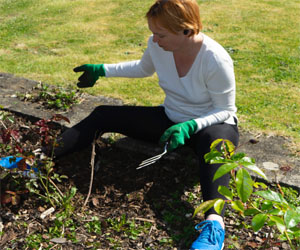


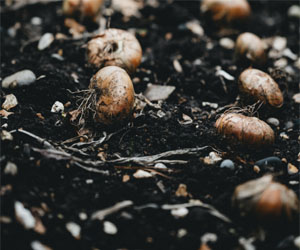

The Looming Crisis
 Understanding Water Scarcity
Understanding Water Scarcity
Water scarcity is not simply a lack of water; it is a condition where the demand for water exceeds the available supply or when the quality of water is compromised to the point of being unusable. It is a complex issue with far-reaching consequences:
1. Impact On Human Health: In regions where access to safe drinking water is limited, water scarcity can lead to waterborne diseases, malnutrition, and reduced quality of life.
2. Agricultural Consequences: Agriculture is the largest consumer of water globally. Water scarcity can result in crop failure, food shortages, and reduced income for farmers.
3. Economic And Social Disparities: Vulnerable communities often bear the brunt of water scarcity, as they lack the resources to adapt or mitigate its effects.
Causes Of Water Scarcity
Water scarcity can be attributed to several key factors:
1. Population Growth: As the global population continues to increase, so does the demand for water, for consumption, agriculture, and industry.
Maximizing Comfort In Minimal Space
 4. Custom Storage Solutions
4. Custom Storage Solutions
Tiny homes often require custom storage solutions. Consider hiring a professional or using DIY skills to create storage systems that fit your unique space. Custom cabinets, built-in shelving, and under-stair storage can make the most of every nook and cranny.
5. Clear Containers And Labels
Clear storage containers are your best friends in a tiny home. They allow you to see what's inside without having to open each container, making it easy to find what you need. Use labels to further organize your belongings, making your tiny space efficient and user-friendly.
6. Downsizing Your Wardrobe
In a tiny home, you'll need to downsize your wardrobe. Consider a capsule wardrobe with versatile, mix-and-match pieces. Rotate your clothing with the seasons to save space and keep your closet uncluttered.
7. Kitchen Efficiency
Tiny home kitchens require special attention. Invest in compact appliances, use wall-mounted storage for pots and pans, and opt for space-saving utensils and cookware. Staying organized in the kitchen is essential for making the most of your limited space.
8. Maximizing Natural Light
Natural light can make a tiny home feel more open and airy. Use light-filtering window treatments, strategically place mirrors to reflect light, and keep windows unobstructed to maximize the benefits of natural illumination.
From Neglect To Paradise
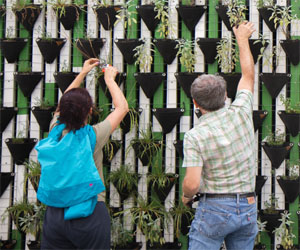 Assessment And Planning: The first step in any garden transformation is a thorough assessment of your space. Take a critical look at your garden, considering factors such as the current state of the plants, soil quality, layout, and potential issues like drainage problems. This assessment will help you identify the areas that need the most attention and guide your planning.
Assessment And Planning: The first step in any garden transformation is a thorough assessment of your space. Take a critical look at your garden, considering factors such as the current state of the plants, soil quality, layout, and potential issues like drainage problems. This assessment will help you identify the areas that need the most attention and guide your planning.
Clearing And Cleaning: For many neglected gardens, the first order of business is clearing away overgrown vegetation, weeds, and debris. This is the blank canvas upon which your transformation will unfold. Prune unruly branches, remove dead plants, and clear the ground to prepare it for new growth.
Soil Improvement: Healthy soil is the foundation of any successful garden. Assess your soil's condition and amend it as necessary. Adding organic matter like compost or well-rotted manure can improve soil structure and fertility, ensuring your plants have the nutrients they need to thrive.
Plant Selection: Choose plants that are well-suited to your local climate and growing conditions. Consider a mix of annuals, perennials, shrubs, and trees for a balanced and visually appealing garden. You can also incorporate native plants, which are adapted to the area and require less maintenance.
Garden Layout And Design: Carefully plan the layout of your garden. Consider elements like pathways, seating areas, and focal points. Create a design that not only enhances the beauty of your space but also ensures practicality and ease of maintenance.
Hardscape Elements: Incorporate hardscape elements like stone pathways, decorative walls, or patios to add structure and functionality to your garden. These features can create focal points and define different areas within the garden.

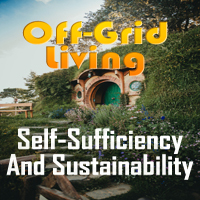



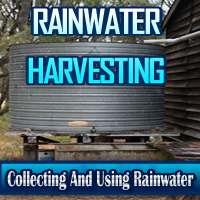
Turning Scraps Into Garden Gold
 Getting Started With Composting
Getting Started With Composting
Select A Composting Location: Choose a suitable spot in your garden or yard for your compost bin or pile. It should be well-drained and accessible for regular turning.
Collect Compostable Materials: Gather kitchen scraps (fruit and vegetable peels, coffee grounds, eggshells), yard waste (leaves, grass clippings, small branches), and other organic materials (paper, cardboard). Avoid meat, dairy, and diseased plants, as these can attract pests and pathogens.
Layer The Materials: Alternate between green (nitrogen-rich) and brown (carbon-rich) materials in your compost pile. This balance provides the right C:N ratio (carbon to nitrogen) for efficient decomposition.
Aerate And Turn: Regularly turn your compost pile with a pitchfork or aeration tool to introduce oxygen and promote decomposition. A well-aerated pile minimizes unpleasant odors and speeds up the composting process.
Maintain Moisture: Keep your compost pile moist but not waterlogged. If it becomes too dry, it won't decompose effectively. If it's too wet, it can become smelly and anaerobic.
Monitor Temperature: A well-working compost pile will generate heat as microorganisms break down the organic matter.
A Cleaner Home And Healthier Planet
 1. Switch To Eco-Friendly Cleaning Products
1. Switch To Eco-Friendly Cleaning Products
One of the simplest and most effective ways to embrace green cleaning is to replace traditional cleaning products with eco-friendly alternatives. Look for cleaning products that have been certified as environmentally safe, such as those bearing the "EcoLogo" or "Green Seal" labels. These certifications ensure that the products meet stringent environmental and health standards.
2. Create Your Homemade Cleaning Solutions
Another excellent recommendation is to make your own green cleaning solutions using readily available household ingredients. Common items like white vinegar, baking soda, lemon juice, and essential oils can effectively clean a wide range of surfaces and provide a fresh, natural scent. You can mix these ingredients to create all-purpose cleaners, window cleaners, and even disinfectants.
3. Prioritize Reusable Cleaning Tools
Invest in high-quality, reusable cleaning tools such as microfiber cloths, mop heads, scrub brushes, and dusters. These tools are not only efficient at capturing dirt and dust, but they also eliminate the need for disposable cleaning supplies. By opting for reusable tools, you can significantly reduce waste and contribute to a cleaner planet.
4. Embrace Energy-Efficient Cleaning Appliances
When it's time to replace your cleaning appliances, consider investing in energy-efficient models. Energy-efficient vacuum cleaners, steam cleaners, and other cleaning appliances not only save you money on energy bills but also reduce your overall energy consumption, which is better for the environment.
5. Practice Water Conservation
Water is a precious resource, and green cleaning recommendations also include water conservation. When cleaning, be mindful of the amount of water you use. Opt for water-saving practices such as using a bucket for mopping rather than letting the water run continuously. Waterless cleaning technologies, like dry steam cleaning, are also excellent options that minimize water usage.